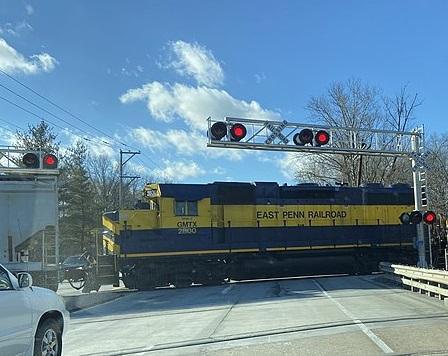Railroad crossing safety is crucial to prevent accidents and fatalities. With more than 200,000 miles of track in the United States, it’s important to be aware of the potential hazards and take the necessary precautions when driving or walking near railroad tracks.
Every day, there are tragedies that can be avoided at rail crossings. According to the National Highway Traffic Safety Administration (NHTSA), in 2021, 1,600 collisions between vehicles and freight and commuter trains occurred alone—not to mention the near 500 incidents involving transit train roadways in 2020. As a result of these terrible accidents, 133 lives were lost and 644 individuals suffered severe injuries. Fortunately for us all, we have the power to prevent these devastating accidents; so let’s make sure such casualties become a thing of the past!
To help keep yourself and your loved ones safe when approaching a railroad crossing, it is important to follow these 10 tips:
- Always obey warning signs and signals: Railroad crossings are marked with warning signs and signals to alert drivers and pedestrians of the presence of tracks. These signals include flashing red lights, gates, and bells. Never drive around or through a gate when it is down, and always obey the warning signals. If the warning signals, such as flashing red lights, are activated, it means that a train is approaching, and it is crucial to stop and wait for the train to pass. Not obeying these warning signals can lead to severe accidents and fatalities.
- Look both ways before crossing: Before crossing the tracks, make sure to look both ways for an approaching train. Trains can come from either direction, so it’s important to take the time to look in both directions. This is especially important at night or in bad weather, when visibility is reduced. Not looking both ways before crossing can lead to severe accidents and fatalities.
- Never stop on the tracks: If your vehicle stalls on the tracks, quickly exit the vehicle and move away from the tracks. Never attempt to push a vehicle off the tracks, as this is extremely dangerous. Trains cannot stop quickly, and it is impossible for the engineer to know that your vehicle is stalled on the tracks until it is too late. By quickly exiting the vehicle and moving away from the tracks, you can avoid accidents and fatalities.
- Never walk on the tracks: Walking on the tracks is illegal and extremely dangerous. Instead, use designated pedestrian crossing areas, and always obey warning signs and signals. Tracks are not meant for walking, and they can be slippery and uneven, leading to accidents and fatalities. By using designated pedestrian crossing areas, you can ensure your safety.
- Never drive around crossing gates: Crossing gates are installed to protect drivers and pedestrians from oncoming trains. Never drive around or attempt to go under a crossing gate, as this is extremely dangerous. Crossing gates are activated for a reason, and going around them can lead to severe accidents and fatalities. Waiting for the gates to rise and the warning signals to stop is the only way to ensure your safety.
- Keep your distance from the tracks: Trains are much longer than they appear, so it’s important to keep your distance from the tracks. This means that even if the front of the train has passed, the back of the train may still be approaching. Never drive or walk too close to the tracks, as this can put you in danger.
- Never assume that a train will stop: Trains do not always stop at railroad crossings, so never assume that a train will stop. Always obey warning signals and never try to beat a train across the tracks. Trains are extremely heavy and fast, and they cannot stop quickly, so always give them the right of way.
- Be aware of your surroundings: Always be aware of your surroundings when approaching a railroad crossing. This includes looking for any unusual or unexpected activities, such as people or vehicles on the tracks. In case of any suspicious activities, contact the authorities right away.
- Keep your vehicle maintained: Always keep your vehicle maintained and in good working condition to ensure that it won’t stall on the tracks. This means regularly checking the brakes, tires, and other important parts of the vehicle. This will ensure that you can quickly exit the vehicle if it stalls on the tracks.
- Train your children: Train your children about railroad safety and the dangers associated with tracks. Teach them never to play on or near the tracks and to always obey warning signals. By educating your children, you can ensure their safety and prevent accidents and fatalities.
In conclusion, railroad crossing safety is crucial for avoiding accidents and fatalities. By following these tips, you can ensure your safety and the safety of others. Always obey warning signals, look both ways before crossing, never stop on the tracks, never walk on the tracks, and always be aware of your surroundings. With these safety tips in mind, you can protect yourself and your loved ones from the dangers of railroad crossing.










